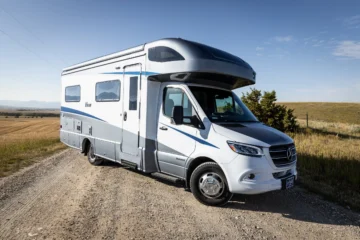Among the many photography styles available, flat lay photography is one of the most accessible, effective, and brand-defining tools for startups. But while it may look simple at first glance, executing a great flat lay takes more than just laying clothes on a white surface.
Flat lay composition is a strategic craft. It’s not only about showcasing the product—it’s about visually communicating your brand’s identity, values, and promise. For fashion startups, especially those building their brand presence from the ground up, flat lay photographs can lay the optical cornerstone for growth.
The questions we will attempt to answer today are why flat lay photography works so well for fashion and how to approach composition with intention. In addition, we will also cover the choice to shoot in-house or outsource to professionals.
Why Flat Lay Photography Works for Fashion Brands
Flat lay photography offers the kind of clarity, control, and versatility that early-stage fashion brands need. It strips away distractions and places the spotlight solely on the garment, like its texture, structure, stitching, and silhouette. Unlike lifestyle photography, which often requires models and bigger budgets, flat lays offer a studio-ready product that is affordable and repeatable.
For startups that may be running with a small team, flat lays are an ideal way to create high-impact imagery quickly. They’re also uniquely suited to e-commerce, where homogeneous product presentation helps to condense the customer experience. A well-crafted flat lay makes it easy for shoppers to understand the product, envision how it fits into their wardrobe, and compare it with other options. On social media, the clean artistic designs stand out in crowded feeds, especially when in line with your brand’s visual language.
The Essentials of Flat Lay Composition
Lighting techniques are the most fundamental for capturing composition. Whether you’re using natural daylight or studio lights, the goal is to get rid of harsh shadows and maintain accurate color representation. Soft, diffused light helps enhance fabric textures and keeps the shot clean and consistent. If your lighting varies from one product to another, it can cause your product catalog to look disjointed, which can undermine brand trust.
Background selection plays a significant role in directing attention. For most flat lays, simple is best. White, gray, beige, or other neutral tones allow the product to pop without distraction. However, more expressive brands might opt for colored or textured surfaces to echo a specific mood. A denim startup might shoot against warm wood; a minimalist brand might choose polished concrete or matte white paper. The key is to select a surface that enhances but never competes with the garment.
Styling and layout are where your creative vision really comes into play. Each element you include—and where you place it—should serve a purpose. A T-shirt might be neatly folded or laid flat with sleeves rolled slightly to suggest texture. A blouse might include a bracelet or clutch nearby to suggest an outfit pairing. Space, alignment, and balance all impact how the viewer perceives the image. The arrangement should feel natural and uncluttered.
Finally, framing and perspective matter. While flat lays are always shot from above, you’ll want to be mindful of how much space you leave around the subject. Leave enough room to accommodate cropping for different platforms (Instagram, web banners, thumbnails, etc.), but ensure that the main product remains centered and legible. Poor framing can quickly make an otherwise well-styled photo appear amateurish.
How to Avoid Common Mistakes
Many new fashion entrepreneurs make similar missteps when attempting flat lay photography for the first time. Overcrowding is one of the most common. Including too many props or trying to style multiple pieces together without a clear hierarchy often results in a confusing image. Each photo should have a clear visual focus. If you’re trying to display more than one product, make sure one takes priority and the others act as supportive elements.
Inconsistent lighting is another frequent issue. Shooting at different times of day without controlling for lighting can lead to major discrepancies. Inconsistency can erode customer trust, especially if fabric colors look different across your site or social media.
Similarly, using colored or patterned backgrounds without considering your brand palette can distract from the product and dilute your personality. A subtle mistake is ignoring brand coherence. Your flat lays should not only look good, but they should also reflect your brand through tone, mood, and angles shown.
A luxury brand might favor crisp, symmetrical layouts with rich shadows, while a playful streetwear line might experiment with tilted frames and pops of color. Everything from the way you fold a sleeve to the types of props you include says something.
Balancing Flat Lays With Your Brand
Flat lays are an optical language. Just like a logo or typeface, it makes an impression, often within seconds. Ask yourself: What emotions should a customer feel when they see this image? That’s why it’s essential to approach flat lay photography with purpose. What lifestyle or values should it represent?
When your product imagery is consistent, it cultivates a sense of dependability among customers. Over time, this builds brand recognition. Familiarity can ultimately result in added trust, loyalty, and repeat business.
When to DIY and When to Outsource
In the early stages of a fashion business, it’s common to handle photography in-house. With a decent camera, good lighting, and some practice, founders can create passable flat lays for social media and simple product pages. But as your business grows, so does the need for polish.
Eventually, the value of outsourcing becomes clear, especially when preparing for a collection launch, seasonal refresh, or wholesale presentation. Working with professionals who specialize in product photography allows you to maintain creative oversight while offloading the technical complexity. It also ensures that your visual content stays on-brand even as your catalog expands.
Fashion brands looking to elevate their visuals without building an in-house team can turn to trusted experts for flat-lay images, like Clothing and Product Photography Studio. Outsourcing to a dedicated studio saves time and often produces a more compelling image library. Their photographers understand the combination of brand and visual uniformity by offering flat lay photography that’s tailored to each client’s product line.
Wrapping Up
For fashion startups, product photography is crucial for building credibility and a distinctive visual identity. Flat lay photography is an efficient method that offers clarity, cost-effectiveness, and strong brand storytelling. By improving your composition and matching visuals with your brand, you can create engaging flat lays, and working with a professional photography studio helps ensure your visuals are polished and consistent.



